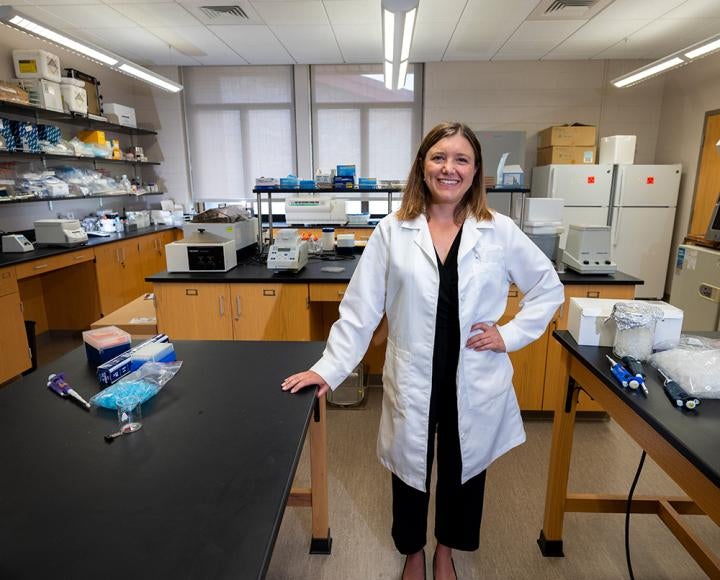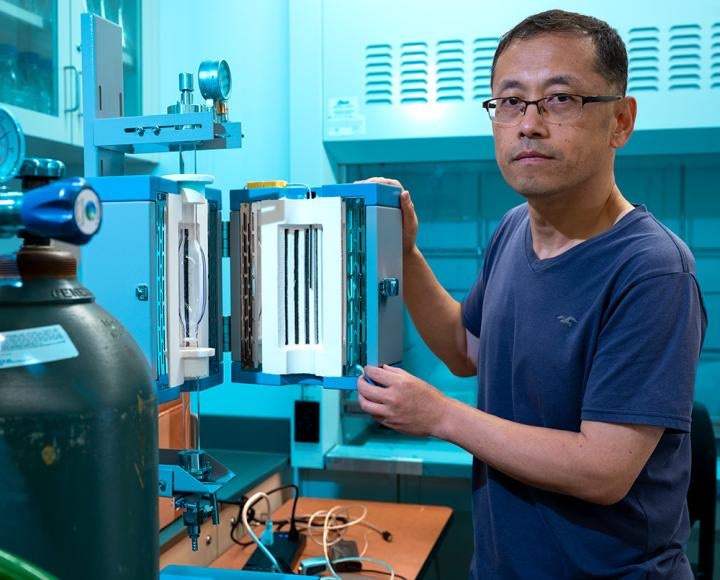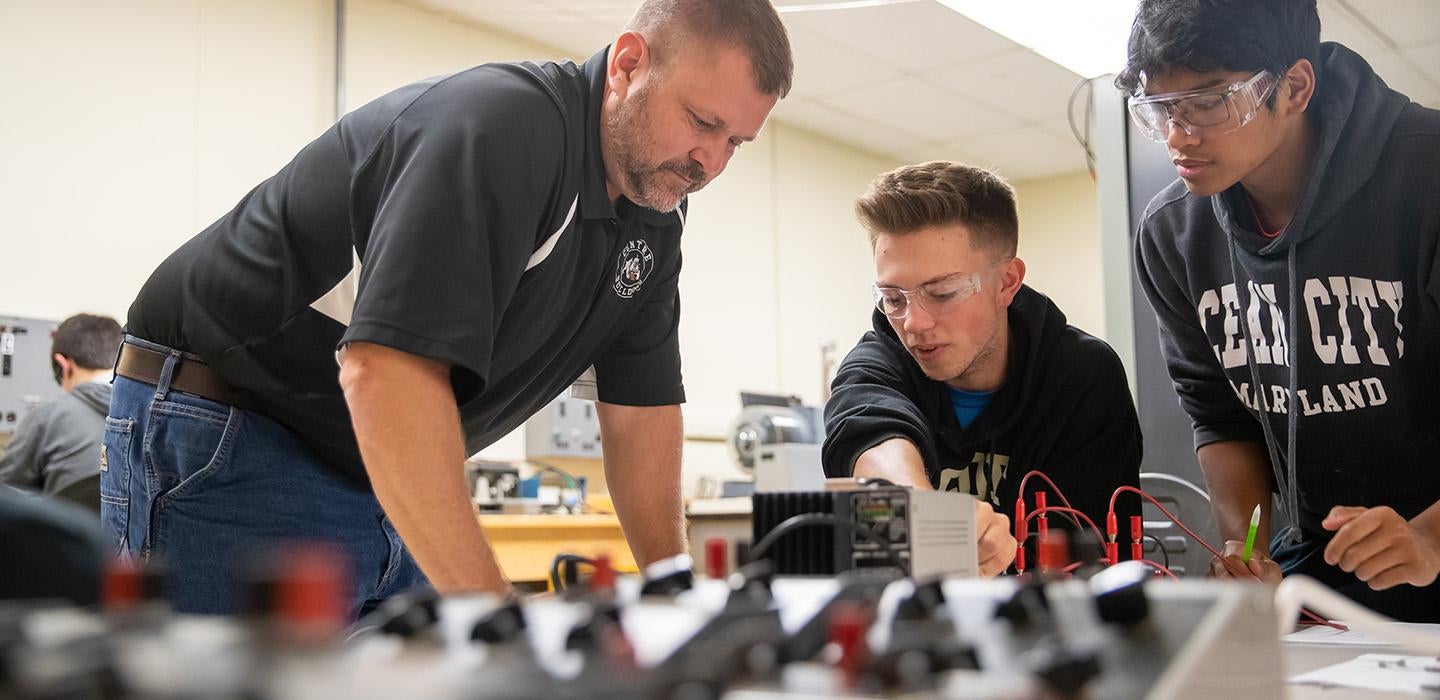
Subscribe to Pittwire Today
Get the most interesting and important stories from the University of Pittsburgh.For faculty researchers at the University of Pittsburgh at Johnstown, progress is always in progress. From getting vaccines in citizens’ arms to creating the next generation of heating technology, Pitt-Johnstown professors’ work makes an impact locally and beyond.
During the COVID-19 pandemic, Pitt-Johnstown became a leader in public health promotion. Jill Henning, professor of biology, in collaboration with medical communication researcher Susan Wieczorek, associate professor of communication, played a critical role in translating COVID-19 research into public health actions. Henning became the area’s go-to media source, writing a column in the Johnstown Tribune-Democrat and hosting regular public meetings.
“Henning took her research to the community in a way I’ve never seen,” said Jem Spectar, president of Pitt-Johnstown. “She found a way to make the science accessible to people who may not have taken precautions or the vaccine, and those people did not feel alienated or talked down to. Without question, the work she did saved lives.”
[Learn more about Jill Henning’s COVID-19 education efforts.]
Henning’s work is just one example of research living within the community. Fiona Knoster (UPJ ’23) — with support from Wieczorek, her communication capstone professor — recently organized Rise and Share: The Message of Recovery Through Art, an evening-long program of speakers, art-making, dance and theater dedicated to creating a space of healing and hope for students and community members affected by addiction. Their collaboration is emblematic of the robust culture of undergraduate research and scholarship on campus.
“Our faculty are excellent teacher-scholars, committed to scholarly engagement, research and publication,” said Spectar.


Chemistry and chemical engineering are also standout disciplines, with an emphasis on the green chemistry movement and projects turning biomass into fuel. Pitt-Johnstown is one of a handful of schools in the state certified by the green chemistry advocacy group Beyond Benign, which seeks to make chemistry labs less environmentally toxic and safer for those who work in them. Other researchers are focusing on reclaiming brownfield sites in the former industrial and mining region.
Two Pitt-Johnstown researchers recently won Pitt Momentum Funds to support their innovative work. Hui Liu, associate professor in chemical engineering, models heat generation using biomass and plastic waste; Ryan Kerrigan, associate professor of energy and earth resources, examines rock massifs for insight into mountain formation.
The size of the campus promotes an ethos of collaboration and interdisciplinary work, said Spectar. “A small college inevitably brings faculty together. We have no silos. Silos are less important than solutions. Indeed, with all the collaborative engagement across boundaries, UPJ is a dynamic community of researchers in motion, application and action to improve our communities.”
Students play a key role in UPJ research efforts, too. In addition to teaching, faculty typically mentor many students each year. Undergraduates routinely can receive credit on research papers and present at conferences.
“Our community is our lab,” said Spectar. “Our research engages with the quality of life here. We are facing the human condition and trying to make it better. Pitt-Johnstown faculty scholars take on the pressing issues in our world, often moving from theory to practice and application.”
Get involved
Pitt-Johnstown faculty are currently accepting students interested in supporting laboratory or field-based research. Supporting faculty research is an opportunity for students to explore their major, said Matthew Tracey, assistant professor of chemistry.
“Students gain not only more practice in their hands-on lab skills, but the ability to ask unique questions,” he said. “Working in a faculty lab is an amazing way to learn through organic curiosity instead of just being told what’s going to happen.”
Here are just a few of the projects you could join:
- Perform field data collection to assess the environmental impacts of sea level rise in Saxis, Virginia, in partnership with the Accomack-Northampton Planning District Commission. To get involved or learn more, contact lead researcher Mitzy L. Schaney, assistant professor and director of environmental studies.
- Explore the reduction of alkenes using biomimetic reducing agents in a multiweek laboratory activity for organic chemistry labs. Contact lead researcher Matthew Tracey, assistant professor of chemistry.
- Design and analyze systems to increase road traffic safety and reduce congestion on roads. Contact lead researcher Chandana Jayasooriya, associate professor of electrical engineering.
- Characterize and delineate the extent of pollution found in former steel manufacturing sites and formulate remediation plans to assist with cleanup efforts. Contact lead researcher Ryan Kerrigan, associate professor of energy and earth resources.
— Brian Connelly and Nichole Faina, cover photo by Alex Mowrey


